Much as there are many wild pigs in Africa, the warthog is one of the most well-known and easily recognized animals because of its tusks and warts on the face.
From its representation as Pumba in Disney's Lion King to the sharp protruding tusks and warts that dominate their face, warthogs are always a joy to meet on safari.
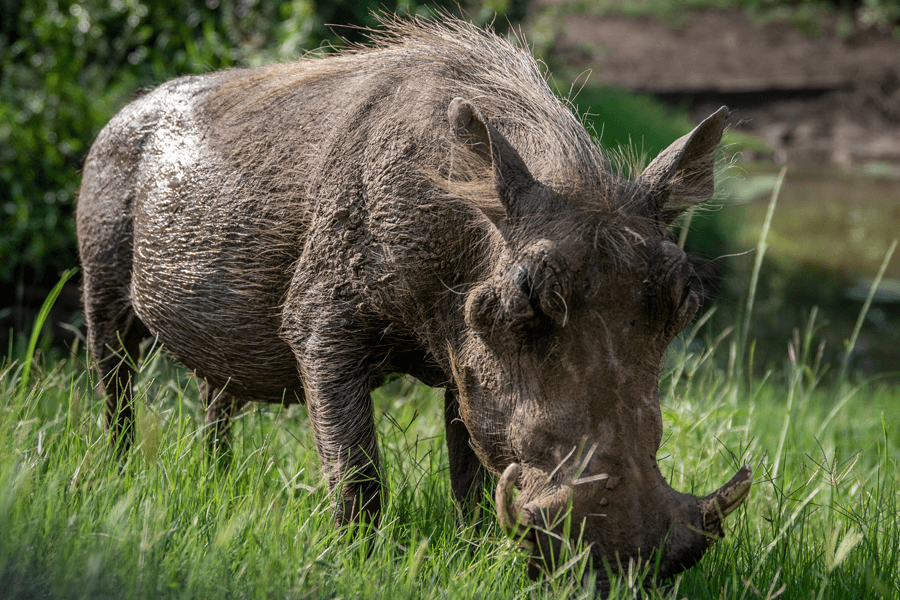
In this article, we'll explore some facts about warthogs that make them interesting and fun animal
Interesting Facts About Warthogs
1. How Many Kinds Of Warthog Are There?
There are 2 recognized species of Warthog (Phacochoerus) - the common warthog and the Desert Warthog.
One of the major ways you can tell the 2 species apart is the geographical location since Desert warthogs are only found in Northern Kenya, Ethiopia, and Somalia. The common warthog is widespread across Subsaharan Africa except in densely forested areas.
2. Where Do Warthogs Live?
Warthogs live in grassland, savanna, and woodland areas of Subsaharan Africa. You can see warthogs in their natural environment in All the countries south of the Sahara desert except for the dense forests and marshes.
You will easily find warthogs in the protected areas of any of the following countries.
|
|
|
|
|
|
|
|
|
|
|
|
|
|
|
|
|
|
|
|
|
|
|
|
|
|
3. How Big Are Warthogs
Warthogs can grow to a size of up to 1.5 meters in length with a shoulder height of 2.9 feet. Females are typically smaller in size and weigh less than male warthogs.
Male warthogs can weigh up to 150 kilograms and females can often weigh no more than 75 kilograms.
4. Why Do Warthogs Have Warts?
Warthogs are named after these warts that are found on the sides of their head. The warts help protect their heads when they are fighting with each other.
They provide some form of cushioning. The warts are thick growths of the skin and have no bones or cartilage.
5. Are Warthogs Pigs?
Warthogs belong to the family Suidae which can commonly be referred to as pigs, hogs, or boars. Much as the warthog is different from the domestic pigs and other members of the hog family, they are closely related.
Warthogs are thus closely related to the other pigs, hogs, and boars - including the domestic pigs.
6. How Fast Are Warthogs?
Warthogs are capable of running at speeds of up to 48 kilometres (30 miles) per hour. They often run to their burrows with their tails sticking upwards.
After reaching the burrow, the warthog enters the rear first with the head and tusks facing out.
7. Why Do Warthogs Have Tusks?
Warthogs are most easily recognized by the tusks that protrude from their mouths. The tusks are used for combat amongst each other, especially during the mating season when males have to keep other males away from a female.
Warthog tusks are also very helpful when it comes to fighting off predators, especially the lower set which is razor-sharp.
8. How Big Are Warthog Tusks?
The upper canine which forms the upper tusk of a warthog can grow up to 10 inches long and about 1 inch wide. The tusks can curve more than 90 degrees from the root and continuously grow curving backwards.
The lower tusks are extremely sharp from constantly rubbing against the upper tusks every time the warthog's mouth opens and closes.
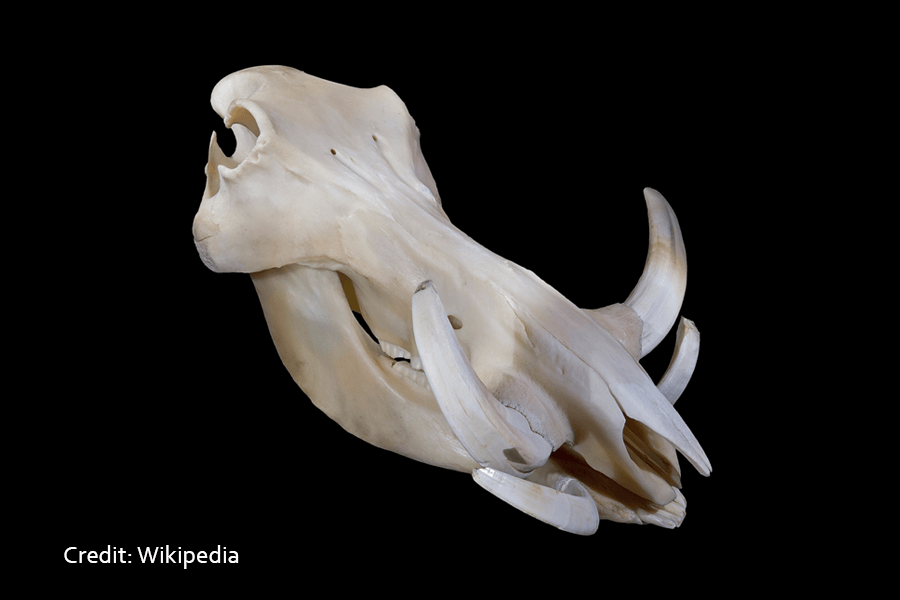
9. Do Warthog Tusks Have Ivory
Warthog tusks are recognized as ivory and can be used in the same way as any other ivory. The shortcoming is due to their size which is nothing compared to an elephant's tusk.
As with all ivory, illegal possession is a wildlife offence that can lead to huge fines or jail time.
10. Are Warthogs Dangerous / Aggressive?
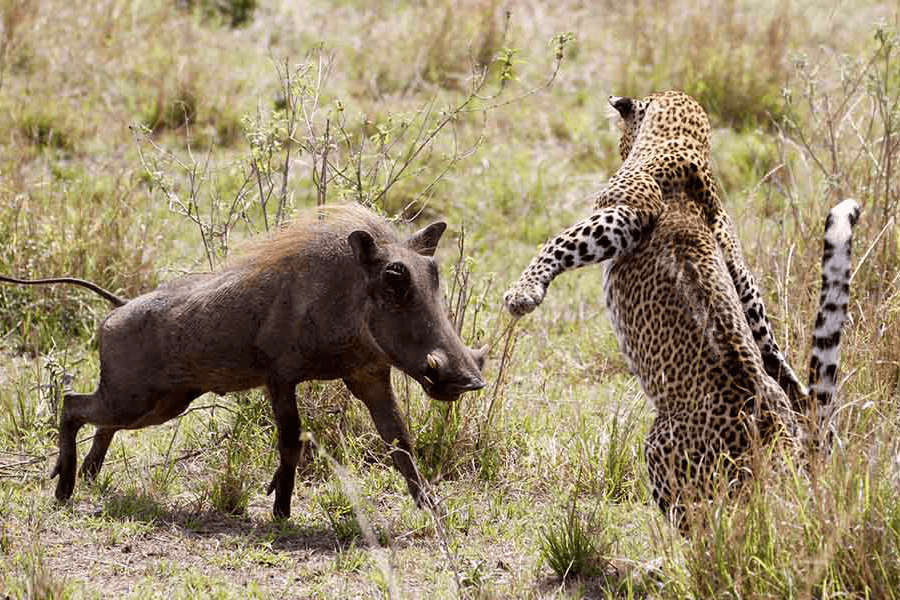
Warthogs are capable of fighting but their primary defense tactic is to flee and sprint away from the bad situation.
Female warthogs (sows) with piglets are quite aggressive and will fight to protect their young ones. Warthogs have been observed charging at large predators and even wounding them severely with their sharp tusks.
On safari, warthogs usually try to keep a good distance from you and you shouldn't worry about any danger from them. Additionally, the game ranger/guide is always at hand and guides you on what can and can't do.
11. What Do Warthogs Eat?
As you might expect of the swine relatives, warthogs are omnivores and eat everything from grasses and roots to meats and fruits.
In the wild, warthogs mainly eat grass and dig for roots and bulbs when it is dry. While they are no hunters, the warthogs will scavenge on meat if the opportunity does arise.
12. Which Animals Kill And Eat Warthogs?
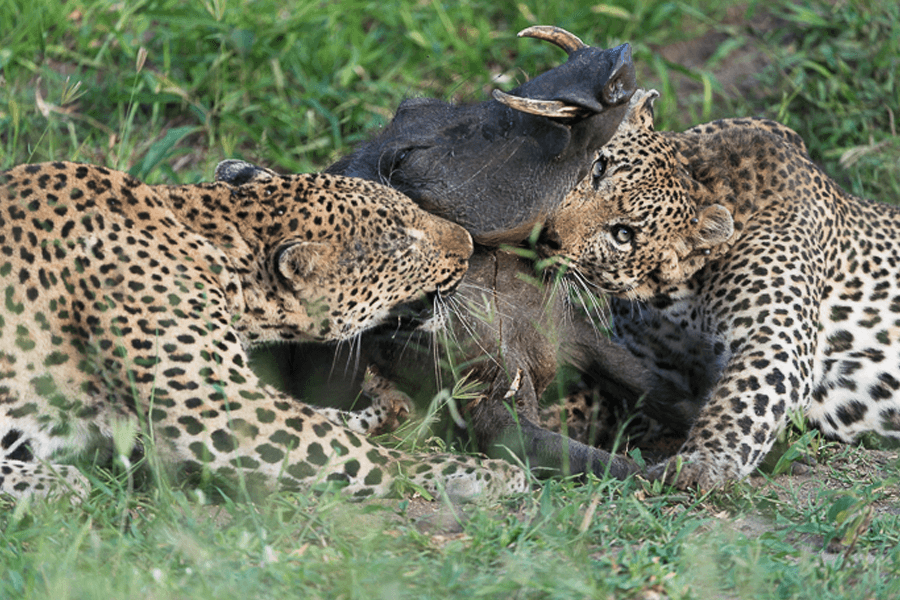
The size of the warthog makes it appropriate prey for many predators in the savannah. The main predators of the warthog include lions, leopards, cheetahs, Nile crocodiles, African wild dogs, hyenas, and some birds of prey.
Birds of prey such as Verreaux's eagle owls and Martial Eagles sometimes kill the piglets of the warthog for food.
Another predator for warthogs is humans who poach these animals for bushmeat. This is especially true in areas where the human settlements are close to protected areas and warthogs end up straying too close.
13. Are Warthogs Smart?
While they might not seem it, warthogs are very smart animals and this helps them to adapt to various threats and changes.
The most notable example of their intelligence is the fact that warthogs change their feeding time depending on the behaviour of the local predators. To avoid poachers, most warthogs look for food early in the morning or late in the evening. This adaptable behaviour can be seen even with other threats.
Additionally, female warthogs have been observed nursing foster piglets that are not their own - a behaviour called allosuckling.
14. Where Do Warthogs Sleep
Warthogs sleep in burrows that are most commonly dug by other animals. While Warthogs could use their feet and heads to dig their burrows, they prefer to take over an abandoned burrow that already exists.
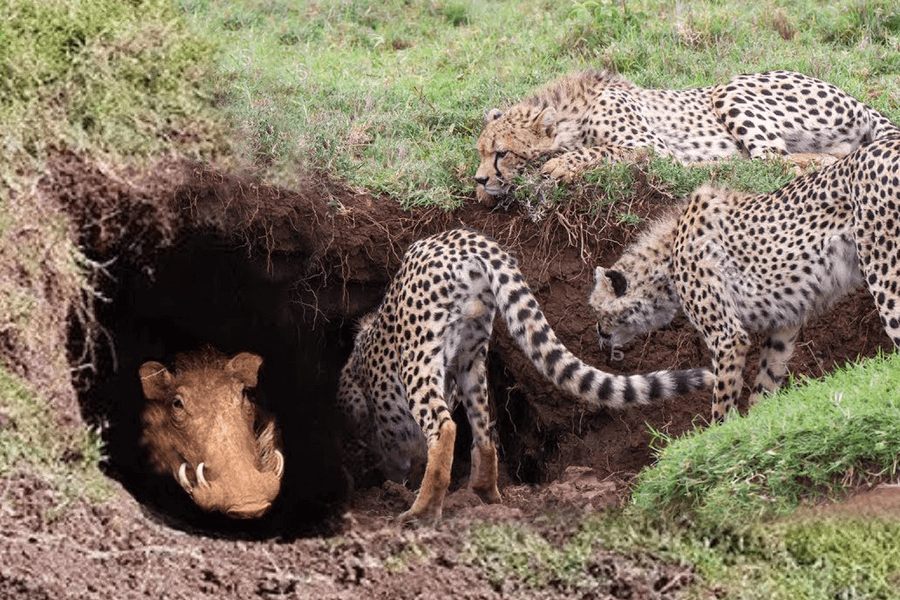
Warthogs enter the burrows in reverse such that their heads are the last to enter. This helps them to easily scare away any intruders as well as easily burst out if necessary.
The burrows provide a constant temperature which helps in regulating their body temperature during the day when it is hot and at night when it gets cold. Since warthogs don't have any body fat or substantial amounts of fur, burrows help keep them comfortable.
15. How Do Warthogs Communicate?
Warthogs communicate using both visual and vocal means. They make several sounds such as grunts, snorts, squeals, and growls as greetings, threats, or warnings.
Females (sows) enjoy resting close together and can sometimes groom each other.
16. How Do Warthogs Reproduce
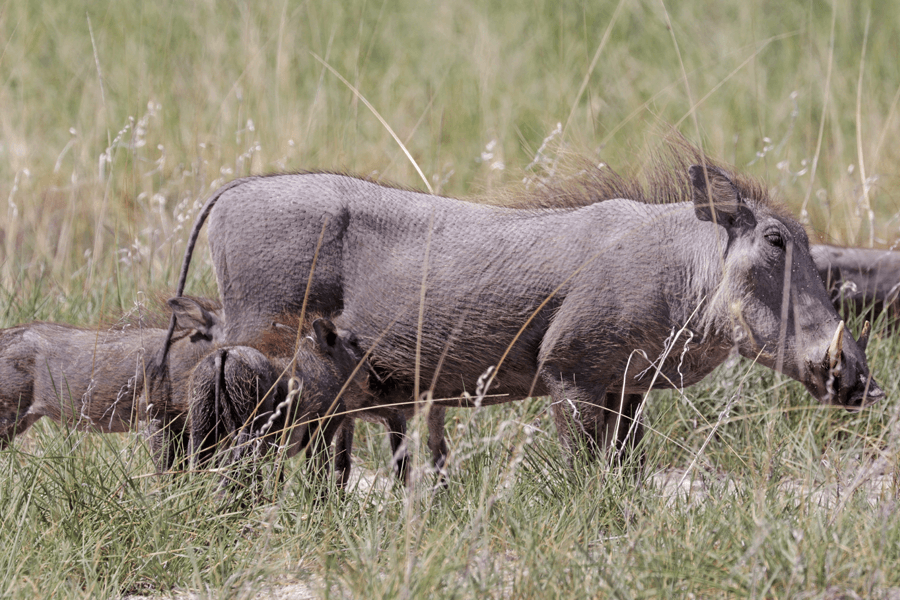
Warthogs often give birth to their young ones at the start of the rainy season. The female (sow) is pregnant for a period of 5 to 6 months and often gives birth to a litter of up to 8 piglets.
The typical litter size is between 2 and 4 since this is ideal for suckling as the mother only has 4 nipples.
A piglet will suckle from a single nipple even if it is the only one remaining. Whenever more than 4 are produced, the competition for food leads to some others dying.
17. Are Warthogs Social
Warthogs live in groups called sounders and occupy a home range. Females live in groups with their young offspring and other females. Adult males like to live alone while subadult males live in bachelor groups.
While they don't make huge social groups, warthogs exhibit a lot of social behaviour even in small groups.
18. How Long Do Warthogs Live?
Warthogs in the wild can live for a period of between 15 and 18 years. This is quite long compared to other animals in the wild, especially predators.
Most Warthogs die or get preyed on during the early stages when they are small and vulnerable but as they grow, so do their chances of survival.
19. Conservation Status
According to the International Union for the Conservation of Nature (IUCN), warthogs are not under threat and are thus classified as Least Concern.
Being adaptable omnivores that can easily survive in most environments, warthogs are widespread and their numbers are considered healthy. Like all wildlife, the major threat remains human activity as a result of encroachment on wild places for agriculture and other human economic activities.
Final Thoughts
To someone who doesn't know warthogs, they might seem like fragile animals in the savanna but these pumbas are much more. While they will flee at the sign of danger, they are not afraid of putting up a fight if the situation comes to that.
All the adaptations, from the tusk, the bumps, and even the social patterns have helped keep the warthogs alive and thriving in the tough African wilderness.
We hope this was informative, and when you get to see the warthogs on an African safari, your knowledge will make your experience and curiosity even better.
Related Articles
- Interesting facts about zebras
- Fun facts about African lions
- Fascinating things to know about Meerkats
